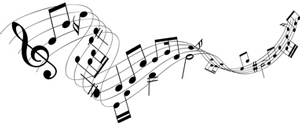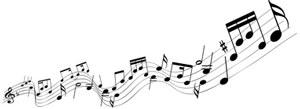How to Sing with Toddlers – The Hanen Way!

The power of music is undeniable. Music can soothe and calm, it can distract children during stressful or difficult moments, and it can also be exciting and stimulating and make kids want to dance! Toddlers (aged 1-3 years) enjoy music in a variety of ways, including moving to the rhythm, dancing, beating a drum, doing some of the actions, and even singing the words of familiar songs.
Singing with your child the 'Hanen Way' means:
- Building in opportunities for your child to participate during the song.
- Using repetition to help your child learn new words.
Singing the “Hanen Way” encourages your toddler’s social, cognitive, and communication development while the two of you connect and have fun together!
Tips for singing with your toddler
When to Sing
Any time is a good time to sing with your toddler! There may be certain times when you routinely sing with your child, such as bedtime. More active songs which involve movement (such as Ring Around the Rosie) might be more appropriate during the day.
Another good time to sing is during daily routines, such as when washing your child’s hands (as in the example above). As daily routines happen regularly, they provide many opportunities for your toddler to hear the lyrics over and over again. Examples of other daily routines include diaper changing/going potty, getting dressed, getting in the car, cleaning up the toys, and putting on shoes. Singing during routines can also make a less desirable routine more enjoyable for a child who is resisting the routine.
How to Sing
It doesn’t matter what you sing or whether or not you can even carry a tune – your toddler will enjoy this time connecting with you!
Here are some simple tips to help make singing a learning experience for your toddler that will promote his communication and social skills:
- Sing about what catches your child’s interest – Whether it’s a “made-up” song or a well-known children’s tune, follow your child’s lead and sing something that encourages your child to participate with you.
- Be face to face – This allows your child to make eye contact with you, and learn from your facial expression, actions, and words.
- Sing slowly – This helps your child hear the words and learn the actions.
- Create opportunities for your child to participate – This will depend on your child’s age, stage of development, and interests. He could bang on a drum (or bang a wooden spoon on a kitchen pot!). He might enjoy doing some of the actions during the song. Or he may try to sing a few key words during the song. As children approach their third birthday, they will likely be able to sing many or all of the words of favourite, familiar songs.
- Pause and wait – Once you know how your child might participate during the song, you can help him to do so by pausing and waiting during key moments in the song. A good place to pause and wait is at the end of the line of music. You can pause before you say the last word and see if your child can fill it in. For example, when singing “Twinkle Twinkle Little Star”, you might pause before saying “are” (“how I wonder what you.....”). If you wait and look expectantly at your child, he may try to say “are”. If not, you can fill it in for him after you have waited a long time. Maybe he’ll try next time.
- Help your toddler perform the actions in the song – If he can’t do it on his own, help your child do the actions in a song. You can take your child’s hands and help him do an action. However, if your child resists this or doesn’t enjoy it, do the action yourself and let your child participate in his own way.
- Substitute – For children who can sing many of the words in a song, try substituting a silly or different word in the song to catch your child’s attention. For example, you could sing “Old MacDonald had a zoo...”. If your child plays along, he can help you think of different zoo animals to insert in the song (eg. “and at his zoo he had a zebra...”).
- Repeat the song – Don’t be afraid to sing a song over and over again, if this is what your child wants. Young children often have favourite songs that they never tire of! This repetition helps them learn the lyrics and understand what the words mean.
- Use actions and facial expressions to help your child understand – Some children’s songs have complicated lyrics or new vocabulary for your child. To ensure your toddler understands what these words mean, use actions and facial expression when you sing to help clarify the meaning. You can also try to incorporate these new words into everyday life, to expose your child further to these words and help build understanding. For example, if your child enjoys the song “London Bridge” and “bridge” is a new word for your child, you could try building bridges out of blocks or Lego to reinforce the concept.
There are a few ways of enjoying music with your toddler. One way is to sing well-known children’s songs, like “Twinkle Twinkle Little Star” or “Old MacDonald Had a Farm”. But another way to share music is to make up a song especially for your child. You can follow the guidelines below to create a song for your child, and then have fun singing using the tips below:
Recipe for a song
- Choose a simple, familiar tune or make up your own melody
- Make up a song about things that are familiar or interesting to your child
- Choose meaningful, useful words that your child understands
- Put new or important words at the end of the lines in the song – this will make these words stand out, and make it easier for your child to try to sing these words
- Keep it simple! Kids love repetition and learn from it. So repeat key lyrics and keep the number of words to a minimum.
- Add simple actions to the song
Here’s a song to the tune of “This is the way we....” (also known as “Here we Go 'Round the Mulberry Bush”) that you can sing every time you wash your child’s hands. Notice that the words are very repetitive. The words “hands” and “clean” stand out because they are at the end of the line of music:

This is the way we wash our hands
Wash our hands, wash our hands
This is the way we wash our hands
Now they’re nice and clean!
For even more fun, you can incorporate pretend play into your song. When getting ready for bed, sing a song to the tune of “Frère Jacque”. Have your child pretend he’s sleeping, and nudge him at the appropriate moments in the song:

Adam is sleeping
Adam is sleeping
Wake him up
Wake him up
Adam is sleeping
Adam is sleeping
Wake him up
Wake him up
What if your child doesn’t like it when you to sing to him?
Some children do not enjoy being sung to. If this is the case for your child, don’t despair! Here are some other ways to enjoy music with your child:
- Try playing music on a CD and sing along with your child
- Try playing musical instruments
- March around the room or dance to music
- Try “saying” a song. Instead of singing, say the lyrics of the song. The natural rhythm of the words will turn the song into a little poem that your child might enjoy.
- Try nursery rhymes (such as “Hickory Dickory Dock” or “Hey Diddle Diddle”) or fingerplays (such as “Round and Round the Garden”). Nursery rhymes and fingerplays are like songs without a tune. They have repetition and rhythm built right in – that’s why they are so catchy and fun!
If you follow the guidelines above, you will probably notice that your child:
- Enjoys singing with you, and probably pays attention to the song for a longer period of time than usual
- Asks to sing with you more often
- Participates during the song, through facial expression, actions, sounds, and/or words.
This approach to singing with your toddler comes from It Takes Two to Talk® (Pepper and Weitzman, 2004), a practical guidebook for parents who are concerned about their child’s language development.
Click on the links below to find out more about how Hanen can help you help children communicate:
Similar articles by tag:
